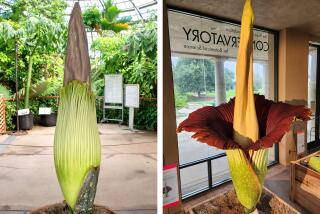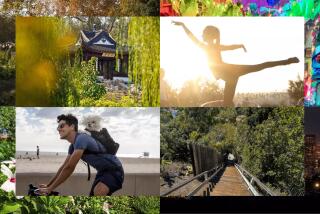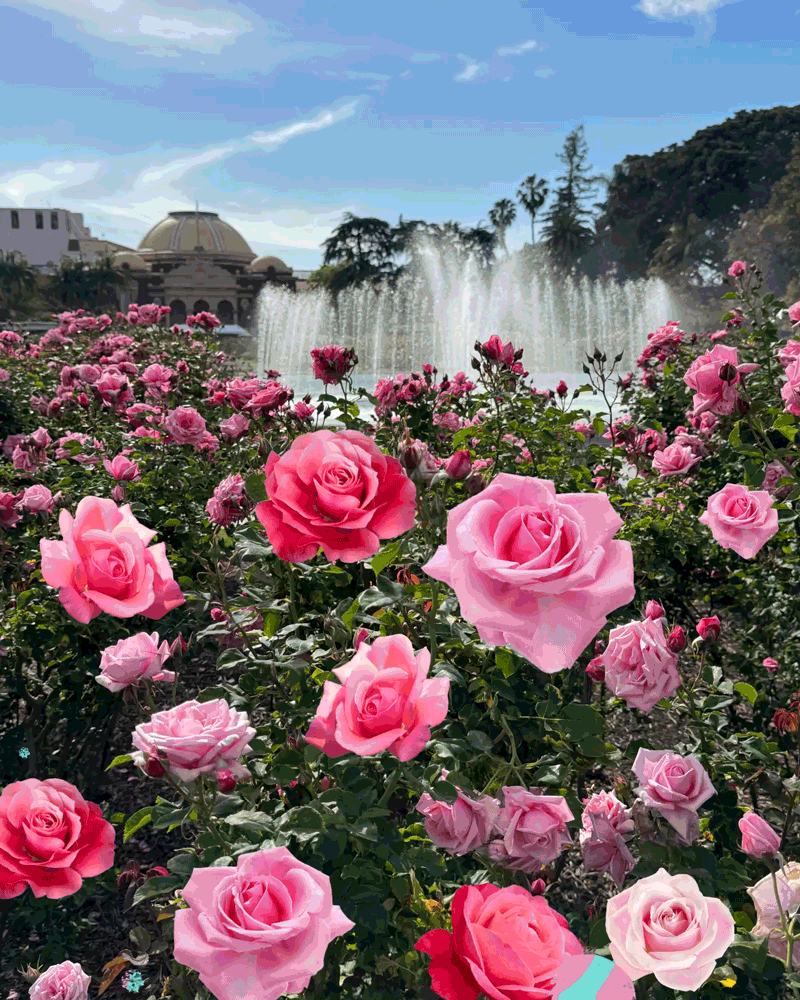House of Treasure : * The Huntington library, art collections and botanical gardens offer more than can be seen in an afternoon visit.
The Huntington is one of those fabulous places that illustrate both the glories and limits of acquisition. The legendary library, art collections and botanical gardens in San Marino were once the private playground of one of America’s wealthiest men--Henry E. Huntington--who inherited millions and amassed a fortune of his own as head of the Southern Pacific Railroad and Pacific Electric and as a speculator in real estate.
A multimillionaire in an age with little to fear from the tax collector, Huntington had an educated sensibility and the money to indulge it. A heroic spender, in historian Kevin Starr’s apt phrase, Huntington bought himself a garden worthy of King Solomon and kept Sotheby’s smiling with his purchase of a Gutenberg Bible and other literary treasures. His wife, Arabella, couldn’t stand Southern California--she would rather have been in Paris, thank you--but eased the pain of living in a cultural wasteland with judicious imports, including a mansion full of 18th-Century British paintings.
Time, as it inevitably does, eventually separated the Huntingtons from their treasures (she died in 1924, he in 1927). But in death the Huntingtons practiced a kind of heroic generosity, opening their refined pleasure palace to the polyglot people who had underwritten their lifestyle with muscle and blood. The estate and its collections were transferred to a nonprofit educational trust. As one of the terms, Huntington insisted that the institution be open to the public free of charge, as it has been since 1928. If your timing is right, and no other gawkers are around, you can almost imagine yourself in Arabella’s costly shoes, nibbling the extravagant delicacy of your choice under the gaze of Gainsborough’s “Blue Boy.” Today the Huntington suggests that visitors make a $5 donation ($3 for children). It’s strictly voluntary and a small price to pay to experience the subtle beauty of the Japanese garden, to contemplate the mystery of how movable type revolutionized the world and to play the plutocrat, if only for an afternoon.
Know at the outset that you can’t do justice to the Huntington in three hours. The gardens alone cover 130 acres and could keep you intrigued for a lifetime. With that caveat in mind, slather on the sunscreen and lace up your walking shoes.
1 p.m.: The rich are different from you and me. They have better gardens. The Huntingtons transformed a working ranch, covered with the sparse vegetation typical of the San Gabriel Valley, into a personal Eden--perhaps the finest private garden in America. In fact, the Huntington has 15 distinct garden areas, featuring more than 14,000 different types of plants. Every day at 1 p.m., a docent leads visitors through this botanical Disneyland, which changes with each of Southern California’s subtle seasons. Depending on demand and the number of docents available, additional garden tours may be scheduled throughout the afternoon. You can find out by consulting the sign at the rear of the information pavilion. Plan on an hour and a half if you take the guided tour.
As an alternative, pick up a booklet (50 cents) that lets you explore the gardens on your own for an hour or more (similar guide-yourself booklets are available for each of the Huntington’s principal attractions). Use the map to find such must-sees as the Shakespeare garden, which includes everything from the violets that all withered when Polonius died to the white roses that were the symbol of Richard III as a glorious son of the House of York. The rose gardens are one of the Huntington’s treasures, a sweet-scented, three-dimensional history of roses that starts with centuries-old European varieties that bloom only in the spring and continues through the latest prize-winning hybrids.
Each of the gardens has its own mood. Especially tranquil and lovely is the Japanese garden, with its elegant drum bridge and Japanese house. Spend some time in the adjacent Zen garden, in which pebbles have been raked to suggest a flowing stream.
The Huntingtons were hip about xeriscaping long before the rest of us. Perhaps the most remarkable botanical display is the 12-acre Desert Garden, which includes more than 2,500 species of succulents and other water-conserving plants. This is a garden of unlikely colors, bizarre shapes and plants that look as if they came from another planet. Much of the water for the gardens comes from deep wells on the property.
2 p.m.: I don’t know about you but all that walking has made me hungry. The Huntington has a glorified snack bar that serves sandwiches and other light fare, but a far better option is the English-style tea, served daily in the Rose Garden Tea Room. The ambience is unadulterated Martha Stewart--and the good news is you don’t have to paint, stamp or bake anything yourself to achieve it. For $11, there is caviar on white bread with egg and scallions and other finger sandwiches, dainty sweets such as chocolate tartlets filled with lemon curd and, of course, tea. Note that tea at the Huntington is served earlier than its British equivalent--from 1 (noon on weekends) until 3:30 p.m. Reservations are recommended. Call (818) 683-8131.
2:45 p.m.: Until Aug. 30, the main exhibition hall of the soaring Huntington Library is home to an extraordinary exhibit called “The Last Best Hope of Earth: Abraham Lincoln and the Promise of America.” One of the most comprehensive Lincoln exhibits ever mounted, it presents the Great Emancipator’s life and achievements through 200 rare documents and artifacts, many from the vast private collection of Louise and Barry Taper. A collaboration between the Huntington and the Illinois State Historical Library, the show gives visitors a unique opportunity to consider both Lincoln’s greatness and his complexity (there are no plans for the exhibit to travel). Some of the material takes you deep into goose-bump territory--one of five copies of the Gettysburg address in Lincoln’s hand, for instance. Here are the gloves the doomed President carried to Ford’s Theater the night of April 14, 1865 (he died 129 years ago today). Look closely, and you’ll see what appears to be dried blood along one side. Vicious racist material illustrates the depths to which the supporters of slavery were willing to go to oppose Lincoln. And there is abundant evidence that Lincoln could be as scathing as he was eloquent. Consider the note he wrote to Gen. George M. McClellan two weeks before firing him. McClellan had complained that his horses were fatigued. Lincoln inquired: “Will you pardon me for asking what the horses of your army have done since the battle of Antietam that fatigue anything?”
Just beyond the Lincoln show in the library’s west foyer is a small jewel of an exhibit on the advent of printing and the creation of a reading public. Three of the items on display, all from the Huntington’s collection, speak volumes about the institution and its spectacular bibliographic holdings. They are the Ellesmere manuscript of Chaucer’s “The Canterbury Tales” from about 1410, a Gutenberg Bible and a first folio of Shakespeare’s plays (1623). The exhibit continues through Aug. 30.
3:45 p.m.: You only have 15 minutes left if you are really committed to this three-hour tour business. So hustle right over to the Huntington Art Gallery, once the residence of Henry and Arabella. The Main Gallery contains Thomas Gainsborough’s “Blue Boy,” an object of pilgrimage for most Huntington visitors. Facing the famous portrait is “Pinkie”--almost as familiar--by Thomas Lawrence. If you had more time, you could walk through the newly refurbished Virginia Steele Scott Gallery of American Art, which reopens Tuesday. But you’ll have to save that for your next three-hour tour of the Huntington.
WHERE AND WHEN
What: The Huntington: Library, Art Collections and Botanical Gardens.
Location: 1151 Oxford Road, San Marino.
Hours: 1 to 4:30 p.m. Tuesday through Friday, 10:30 a.m. to 4:30 p.m. Saturday and Sunday.
Price: No admission charge, but a $5 donation is suggested for adults, $3 for children.
Call: (818) 405-2141.


